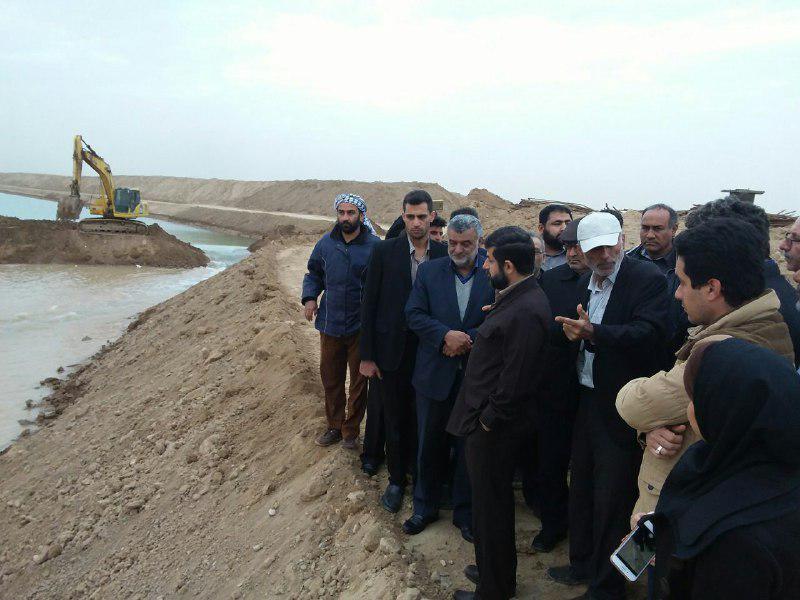Iran’s Minister of Agriculture Mahmoud Hojjati made a visit to the canal which is expected to navigate water to the regions from which sand and dust storms originate. During the visit, he was accompanied by Governor General of Khuzestan province Gholam-Reza Shariati.
With a length of 47km, Poursharifi Canal established by Jahad Nasr Institute is set to navigate water from Karun River to the southeastern regions of Ahvaz which are the main origins of dust pollution in the province, a Farsi report by ISNA said on Tuesday.
The lion’s share of the canal has a width of 30m, but a 10-km part of it is 50 metres wide. It transfers 20 cubic metres of water per second from Karun to 42,000 hectares of the critical regions.
Hojjati also told ISNA that the government’s short-term plans to counter the dust pollution, including irrigation and tree planting in these areas, will be finished in two months, before the end of current Iranian calendar year.
Earlier in a TV interview on Monday night, Iranian President Hassan Rouhani said so far 5,000 trees have been planted in the critical regions and the figure will reach 30,000 by mid-March.
“The huge irrigation canal has been built to transfer Karun’s water to the critical regions by the next two days,” he said during the live interview aired by the state TV.
“Of course, it takes time for the saplings to turn into tress but we have to do something instead of sitting idle against the problem even if our efforts begin to pay off after 5 to 10 years. We already lag behind the time,” he noted.
Rouhani went on to say that the water will make the regions wet and help prevent the dust and sand storms.
He also referred to the use of mulch, besides the irrigation and tree planting, as another method of controlling the dust storms.
Iranian residents in the western and southwestern provinces, especially Khuzestan and Ilam, face a growing trend in the influx of fine particles, which are mostly generated by drought-hit marshlands in neighbouring countries and in Iran.
According to the latest data released by the Environmental Organization of Khuzestan Province, the air pollution index in Ahvaz has breached the “hazardous” level upper limit of 500, at which it stops measuring levels of PM2.5, with 53 times worse than the moderate level.
A hazardous level is an alert in which everyone may experience ill effects and are advised to stay indoors.
Nowadays, it is crucial to think of new methods to stabilize soil and control dust storm and sand movement crisis centres because of problems caused by petroleum mulch disadvantages.
To cope with such problems, new technologies have been developed for production of different kinds of biologic and polymeric mulch, which enjoy advantages like ease of use, durability, and lower costs.
According to the data released by Iran’s Vice-Presidency for Science and Technology, field testing and evaluation of the new products indicates that their operation in soil stabilization and dust control was durable and efficient.
